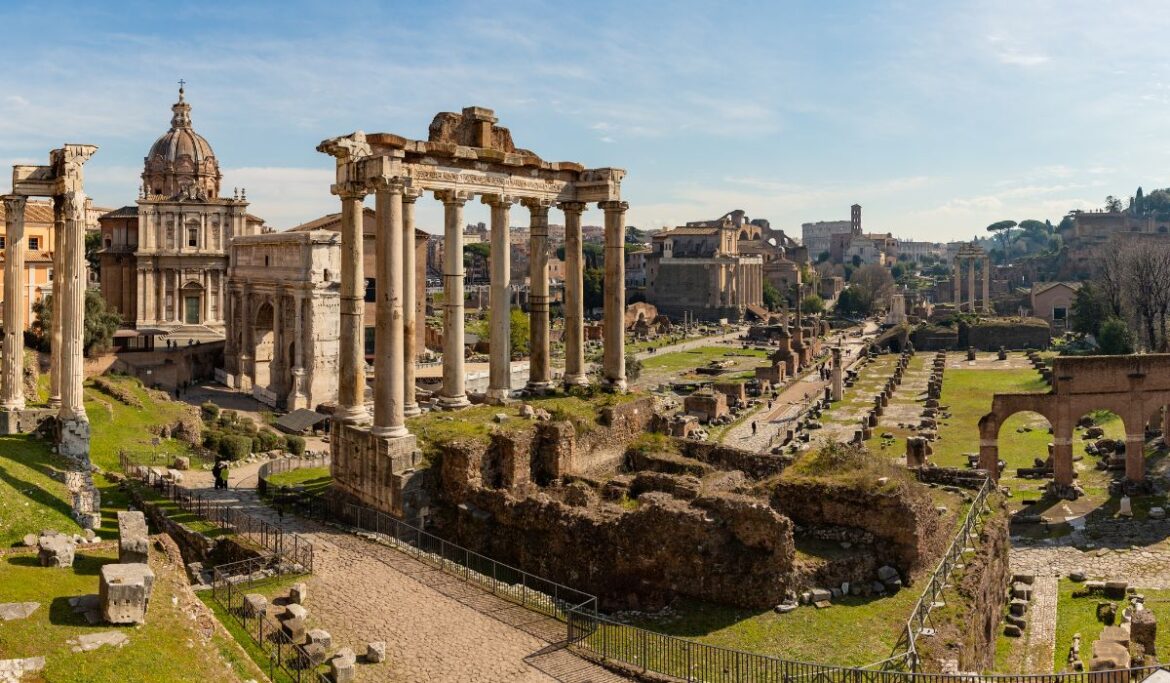Learn About Some of the Best Roman Archeological Sites Open for Visitation in 2025, Plus Various Exclusive Tour Options
Exploring the archaeological wonders of Rome offers a journey through history, showcasing the grandeur of ancient civilizations. To best experience these historical sites, it’s essential to plan your visit strategically, considering location, accessibility, and the unique attributes of each site.
Ostia Antica

Often likened to Pompeii, Ostia Antica is an impressive archaeological park just outside Rome’s city center. Here, you can stroll through ancient streets lined with shops and homes, visit a well-preserved theater, and appreciate intricate mosaics. Ostia Antica presents a unique opportunity to experience the layout of an ancient city, contrasting the Roman Forum’s focus on official buildings.
RECOMMENDED: Book a Ancient Ostia Antica Semi-Private Day Trip from Rome by Train with Guide
We highly recommend booking a small-group tour with a local, professional guide to truly get a feel for the Ostia Antica. The tour is offered by City Wonders Ltd, one of the most reputable tour operators in the city and is our most highly-rated experience. Train tickets are included in the tour price, reserve now & pay later.
The Roman Forum

The heart of ancient Rome, the Roman Forum is a sprawling site filled with ruins of temples, basilicas, and public spaces. A guided tour is highly recommended to fully appreciate the site’s historical significance and to navigate its vastness effectively. The forum was the center of Roman political and social life, hosting events like political upheavals and gladiatorial battles before the construction of the Colosseum.
RECOMMENDED: Book a Private Colosseum and Roman Forum Tour with Hotel Pickup/Drop Off
Nothing beats a private tour to avoid crowds and have a more intimate experience while visiting these historic sites. This private tour offered by Eyes of Rome provides skip-the-line access and hotel pickup is included. Choice of morning or afternoon tour options. The experience can be customized to your interests and ensures you’ll receive personalized attention from your guide.
The Colosseum



Images courtesy Cristian Bagnarello, Alexander Ozerov and Rabbit75.
The Colosseum, an iconic symbol of Rome’s imperial might, offers a captivating glimpse into the engineering prowess and social complexities of ancient Rome. This architectural marvel, capable of seating around 50,000 spectators, was the scene of gladiatorial combats, wild animal hunts, and public spectacles that defined the Roman Empire’s entertainment. A visit to the Colosseum is not just a step back in time; it’s an immersive experience into the ingenious design of the structure, including its sophisticated system of vaults and the remnants of the hypogeum, the underground complex where gladiators and animals awaited their fate. Unique to this historical masterpiece is the recent openings of the lower levels and arena floor, offering visitors a perspective previously reserved for select researchers and dignitaries.
RELATED: Need a Break From Archeological Sites in Rome? Discover the City’s Best Cuisine and Book a Food Tour
RECOMMENDED: Take a Colosseum Underground and Roman Forum Guided Tour
Skip the notoriously long lines and get a unique perspective of the Colosseum with VIP access to the underground level and arena. This tour is offered by The Ultimate Italy and includes a professional guide, plus entry tickets and tours of the Roman Forum and nearby Palatine Hill. Alternatively, why not train to become a gladiator yourself? Experience the thrill of ancient Rome with a hands-on gladiator training session at the Gladiator School of Rome. Under the guidance of expert instructors from the Historic Group of Rome, you’ll learn the art of gladiatorial combat using authentic period weapons, all while dressed in a traditional gladiator tunic and belt. Conveniently located on the Appian Way, a short distance from the Colosseum, this class offers a unique glimpse into the sports and culture of ancient Rome. Choose your preferred training time when booking here.
Golden House of Nero (Domus Aurea)

This site, once Nero’s lavish palace, offers a glimpse into imperial extravagance. The remnants of the palace, discovered in the late 15th century, include unique murals known as grotesque, a style that influenced Renaissance artists. The Golden House is open on weekends, and reservations are required for the didactic tours available.
RECOMMENDED: Go on a Domus Aurea Tour, The Golden House of Nero with Through Eternity Tours
Explore the Golden House of Nero on the Domus Aurea Tour, where you’ll journey through the historical chambers and delve into the intricacies of its architecture and frescoes, guided by insightful commentary from your expert guide. Enhance your visit with cutting-edge augmented reality technology, allowing you to visualize the splendor of this ancient building as it stood in its prime, centuries ago. This immersive experience bridges past and present, offering a unique glimpse into the opulence of Nero’s era.
Largo di Torre Argentina

This archaeological site is not just a historical landmark but also a cat sanctuary. Here, you’ll find the remains of four temples and Pompei’s Curia, where Julius Caesar was assassinated. While the site is currently closed for restoration, it can still be admired from the exterior.
Palatine Hill

Overlooking the Roman Forum, Palatine Hill is rich with historical significance. It’s where emperors’ palaces once stood and is believed to be the location of the Iron Age village founded by Romulus. Visitors can explore various structures like the Farnese Gardens, the Temple of Cybele, and the House of Livia.
RECOMMENDED: Book a Fast Track Colosseum Tour And Access to Palatine Hill
This concise tour not only grants you swift entry to the Colosseum but also includes access to the Roman Forum and Palatine Hill.
Baths of Caracalla (Terme di Caracalla)
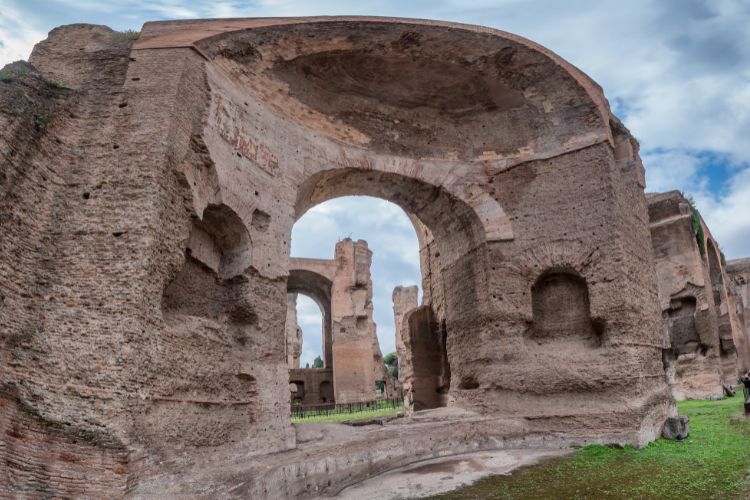
Constructed between AD 212 and 217, the Baths of Caracalla are among the most magnificent ancient bath complexes in Rome. Visitors can roam through the remains of this vast complex, visualizing the grandeur of its original structure. The site also hosts occasional opera performances, blending ancient architecture with cultural events. For fans of the John Wick movie franchise, you might find it interesting to know that in John Wick 2, the scene of Gianna’s D’Antonio’s coronation party and the ensuing gunfight was filmed within the ruins and catacombs of the Baths of Caracalla.
Circus Maximus (Circo Massimo)
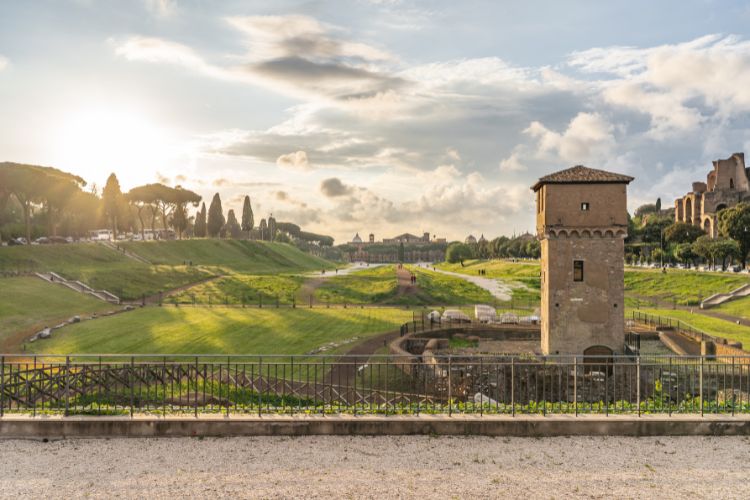
Once the first and largest stadium in ancient Rome, the Circus Maximus was the site of thrilling chariot races. Today, it’s a large public park where you can walk along the track and imagine the roar of the crowds and the speed of the chariots. The site occasionally serves as a venue for concerts and events, adding a modern twist to its ancient legacy.
The Capitoline Museums (Musei Capitolini)
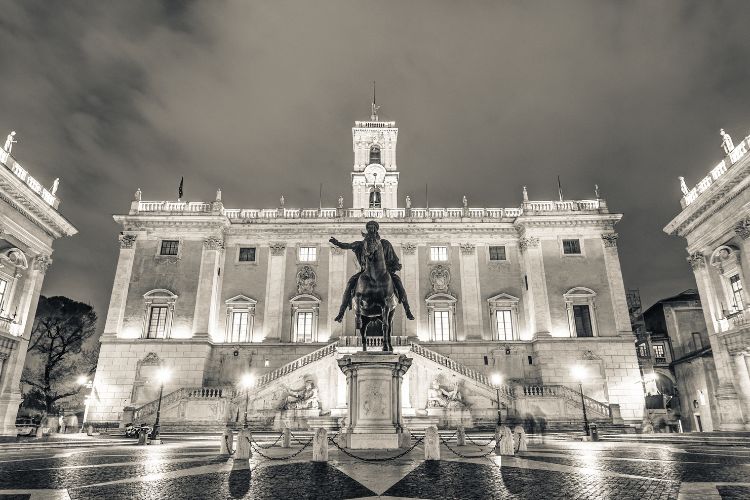
While not an archaeological site in the traditional sense, the Capitoline Museums house a vast collection of Roman statues, inscriptions, and artifacts that provide deep insights into Roman history and culture. The museums are situated on Capitoline Hill, one of Rome’s seven hills, offering spectacular views of the city.
The Catacombs of Rome
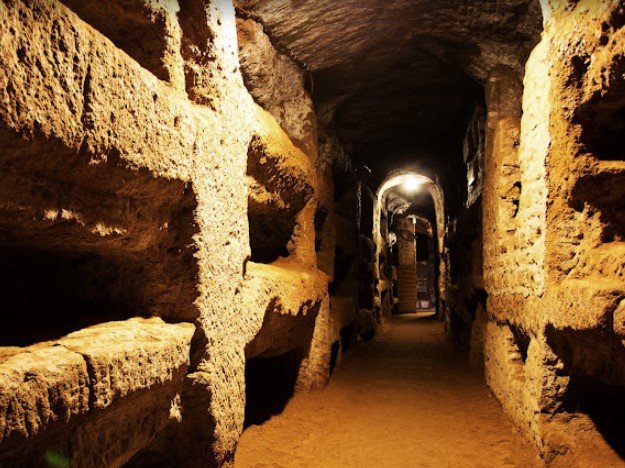
The ancient catacombs of Rome are underground burial places beneath the city, of which some are open to the public, such as the Catacombs of San Callisto and the Catacombs of San Sebastiano. These sites offer a haunting yet fascinating journey into early Christian burial practices and art.
RECOMMENDED: Book a Guided Tour of Rome’s Catacombs and More on a Golf Cart
Bypass the bustling city streets and embark on a delightful exploration of Rome with Wheel Tours’ golf cart tour, perfect for those looking to blend comfort with adventure. This intimate group journey takes you to must-see landmarks like the Colosseum, Appian Way, and Circus Maximus, alongside the hidden treasure of Terrazza del Gianicolo, offering breathtaking city panoramas. The centerpiece of the tour is an exclusive 45-minute exploration of the Catacombs of Saint Callixtus, guided by either a knowledgeable Vatican guide or a priest, providing a deep dive into Rome’s sacred underground.
The Appian Way (Via Appia Antica)
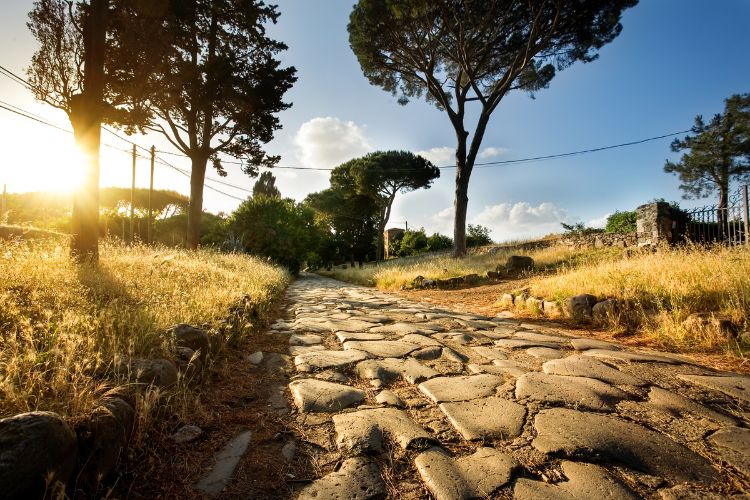
One of the oldest and most important roads from Roman times, the Appian Way is now a protected archaeological park. Visitors can walk along stretches of the ancient road, flanked by ruins, monuments, and tombs, immersing themselves in the landscape that ancient Romans would have traveled.
Theatre of Marcellus (Teatro di Marcello)
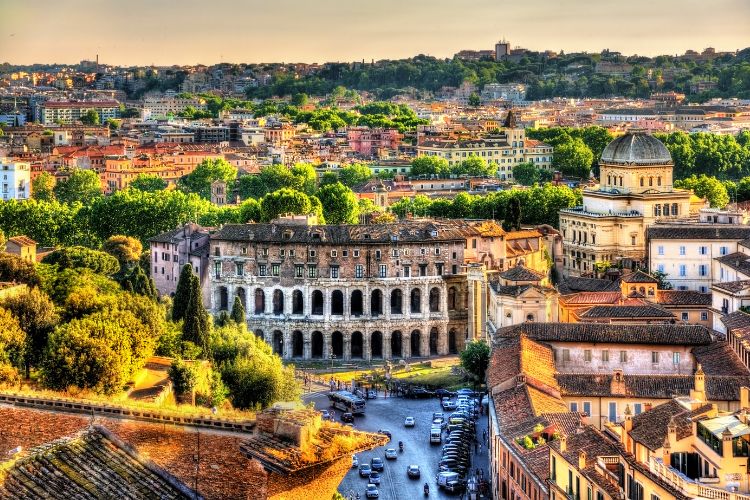
This ancient open-air theatre, inaugurated in 12 BC, predates the Colosseum and was once capable of holding about 20,000 spectators. Its remains offer a glimpse into the entertainment culture of ancient Rome. The structure’s lower levels now house apartments, demonstrating how modern life intertwines with ancient history.
Aventine Hill
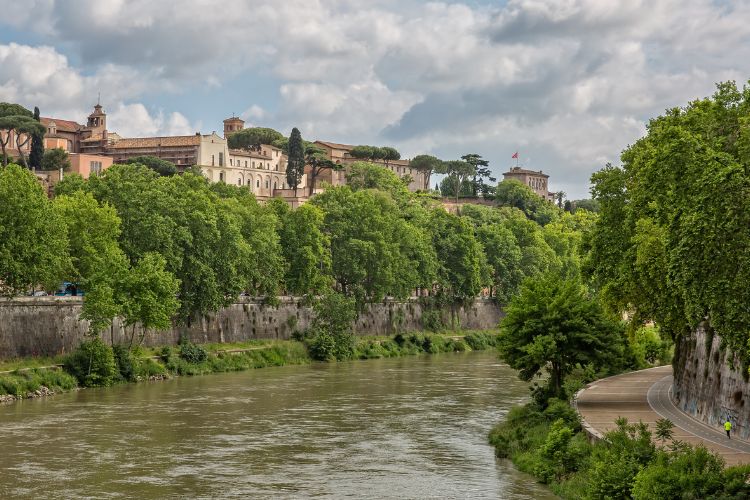
The Aventine Hill is one of Rome’s seven hills, offering not just splendid views but also a peaceful retreat from the city’s hustle. Key sites include the Church of Santa Sabina and the famous keyhole view at the Priory of the Knights of Malta, where a unique perspective of St. Peter’s Basilica can be seen through the keyhole of its gate.
Tips for Visiting Rome’s Archeological Sites
For a comprehensive experience, consider combining visits to multiple sites. Most tickets include entry to several major sites, like the Colosseum, Palatine Hill, and the Roman Forum. There are various tour options available, varying in duration and focus, allowing you to tailor your experience to your interests.
Each archaeological site in Rome offers a unique window into the past, making it essential to prioritize based on your interests and the time available. Remember, Rome’s historical depth means that even a brief visit to any of these sites can be a profound experience.
